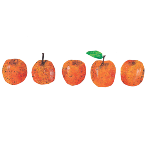
 Every family should have activities that they enjoy together and that become a regular, predictable, and integral part of their lives. Some can be serious pursuits, like attending community functions or religious services as a family; oth ers can be more lighthearted, like going fishing. Whatever they are, they can help bond a family together. These are some rituals that many families have made parts of their lives:
Every family should have activities that they enjoy together and that become a regular, predictable, and integral part of their lives. Some can be serious pursuits, like attending community functions or religious services as a family; oth ers can be more lighthearted, like going fishing. Whatever they are, they can help bond a family together. These are some rituals that many families have made parts of their lives:
Important Conversations. Communication between parents and children should be a top priority in your family. Set aside time to talk, discussing the day’s and the week’s activities, sharing feelings and really listening to one an other.
Respect the privacy of each of your youngsters as they begin to assert their independence during these middle years; they may have certain problems and difficulties they may not want to divulge to their brothers and sisters. You should be able to have a one-on-one conversation with each child without all the other children listening to it. If you honor his wishes for confidentiality, this can build trust between you.
Some families establish a weekly time for a family meeting. When everyone is present, family issues, relationships, plans, and experiences are discussed, and everyone from the youngest to the oldest gets a chance to be heard and to participate.
Recreation and Cultural Activities. Family recreation is an important way to strengthen the family. Sports (participation and spectator), games, movies, and walks in the park are good ways to increase cohesiveness and reduce stress.
Cultural activities can be valuable too. Visits to museums, libraries, plays, musicals, and concerts can expand the family’s horizons and deepen appreci ation for the arts.
Shopping. Shopping trips can provide regular opportunities for parents and children to spend time together. Whether you are grocery shopping or buying birthday gifts, these excursions can be fun and exciting for youngsters in mid dle childhood. Let your children make lists, find items in the store, carry the bags to the car, and unpack them once you return home. Allowing your child some choices and assigning some meaningful responsibilities can help build his self-confidence.
Reading and Singing Aloud. Reading and singing aloud as a family promotes feelings of closeness and an appreciation for music and books. Parents should find out what stories their children like to read, and what music they like to lis ten to. It is lots of fun to take turns reading aloud, and to let the children hear the stories and songs you enjoyed when you were growing up.
Holiday Traditions. These are another source of fun family activities. By learning about the history, significance, and rituals of a particular holiday, chil dren will feel a greater sense of involvement in the holiday preparations and celebrations.
Spiritual Pursuits. For many families, religion plays an important role in pro viding a moral tradition, a set of values, and a network of friends and neigh bors who can provide support. Attending services is something family members can do together.
You do not necessarily need to go to a church, synagogue, or other place of worship regularly, however, to share moral values with your children and help them develop a sense of their history and the continuity of the family. Many families develop a strong spiritual life without the formal structure of orga nized religion.








 Every family should have activities that they enjoy together and that become a regular, predictable, and integral part of their lives. Some can be serious pursuits, like attending community functions or religious services as a family; oth ers can be more lighthearted, like going fishing. Whatever they are, they can help bond a family together. These are some rituals that many families have made parts of their lives:
Every family should have activities that they enjoy together and that become a regular, predictable, and integral part of their lives. Some can be serious pursuits, like attending community functions or religious services as a family; oth ers can be more lighthearted, like going fishing. Whatever they are, they can help bond a family together. These are some rituals that many families have made parts of their lives: Any parent who has tried to navigate a well-stocked grocery store with a hungry child in tow knows it is a challenge. Weaving through endless aisles of candy, frozen pizza, chips, soda, and sugary cereals without at least one incident of pleading or bargaining is considered a major accomplishment.
Any parent who has tried to navigate a well-stocked grocery store with a hungry child in tow knows it is a challenge. Weaving through endless aisles of candy, frozen pizza, chips, soda, and sugary cereals without at least one incident of pleading or bargaining is considered a major accomplishment.